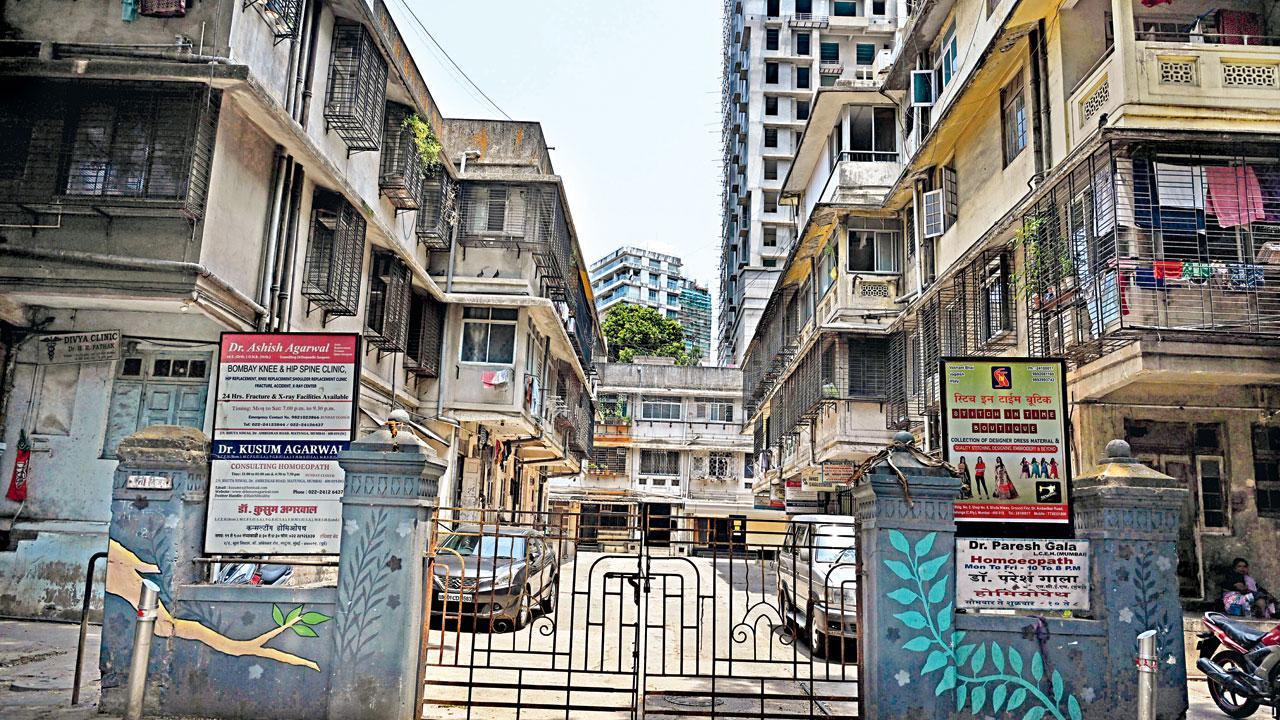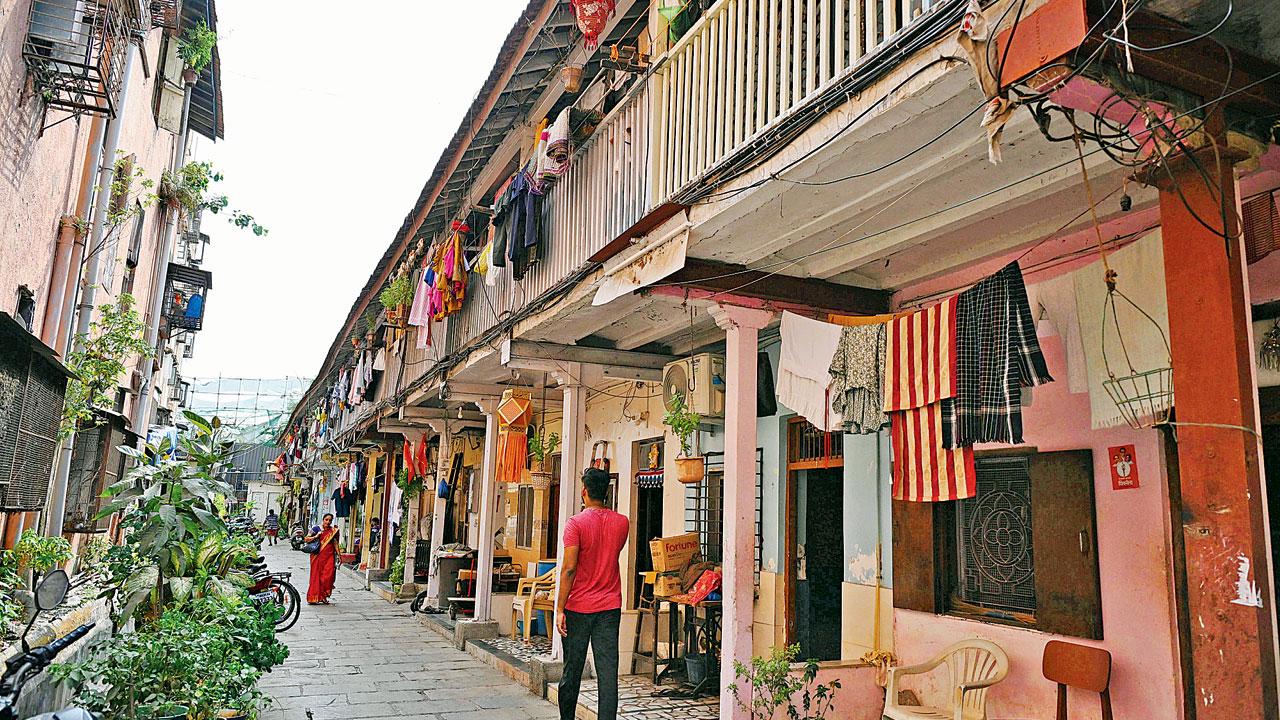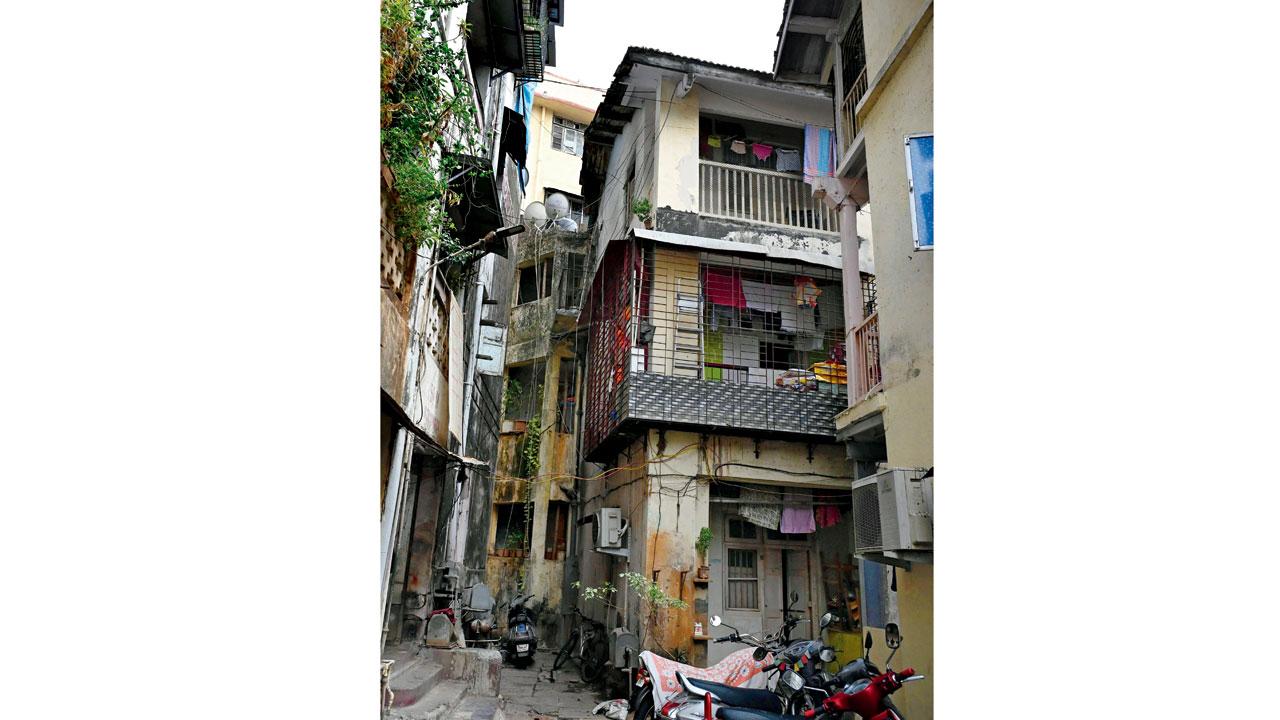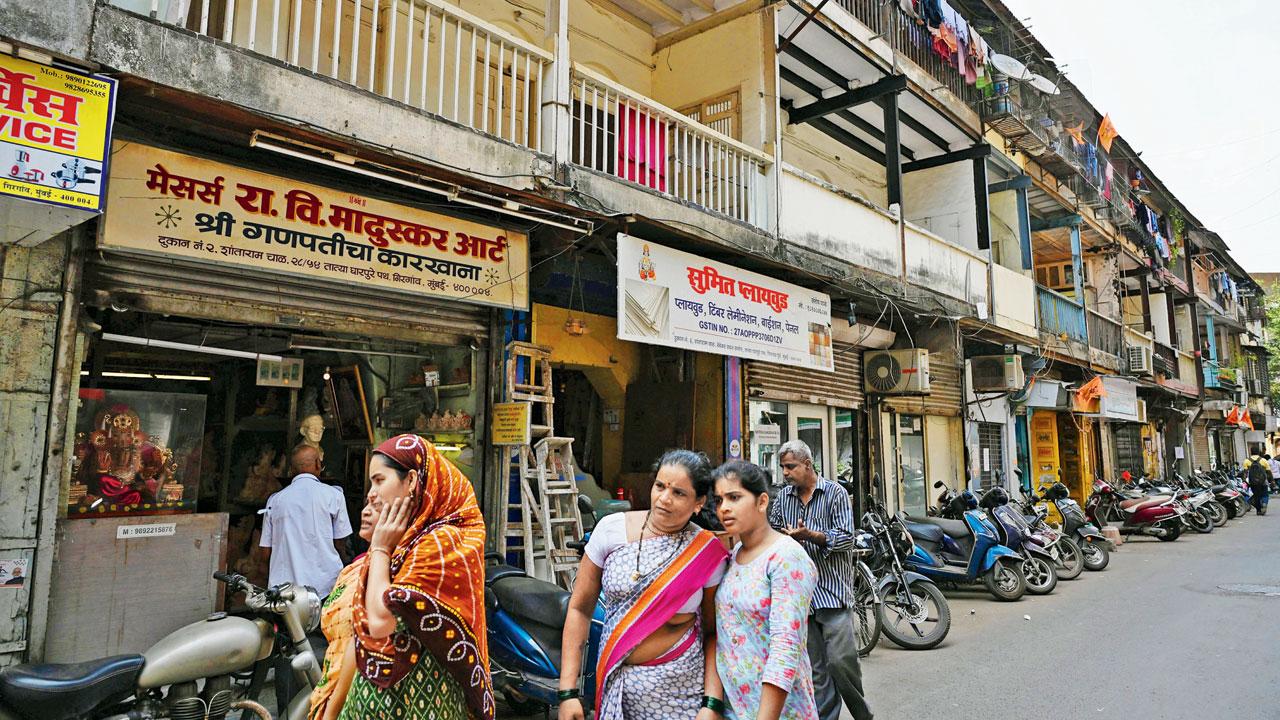Like most heritage buildings in Mumbai, Matunga’s British-era chawl Bhuta Niwas is set to make way for a high rise. Before rampant redevelopment changes the city’s landscape, set out on a trail using this guide

Buta Niwas in Matunga East will be making way for a high-rise. Pics/Ashish Raje
Can history truly brew in a chawl room? You would be surprised! Built to house migrant mill workers, chawls are synonymous with Mumbai and its mill history. Eventually, as the city developed in the late 19th and early 20th centuries, chawls sprung to house the natives while the British lived in sprawling bungalows. Chawls in Mumbai were mainly located in Girangaon (the village of the mills). The Girgaon chawls were where middle-class and upper-middle-class migrants moved in when they came to the city for higher education and white-collar jobs.
ADVERTISEMENT
The chawls of Girgaon are built in the same style: single rooms, large balconies, and a common courtyard. But life in these chawls was starkly different, as these became the stage for social reform movements and activities during the independence era.
Kamat Chawl: Host to a freedom fighter

If you’re well-versed in the Indian freedom struggle, you probably know of Vasudeo Balwant Phadke’s contributions. An armed revolutionary, Phadke was the first non-royal to lead a revolt against the British. While he made Pune the centre of the armed struggle against the Raj, Phadke spent time studying in Mumbai. From 1860 to 1865, Phadke was a student and became one of the earliest graduates of Bombay University. It was during this time that Phadke was a resident of Kamat Chawl. Other notable leaders too have been rumoured to have lived here. Reports from 1899 reveal that two of the Chapekar Brothers – Vasudeo Hari (also spelt Wasudeva or Wasudev) and Balkrishna Hari—were captured at Kamat Chawl. Both were accused of assassinating British officer Walter Charles Rand and his military escort, Lt Ayerst, and were later arrested at the chawl by the British forces.
Keshavji Naik Chawl: Where the first chants of ‘Ganpati Bappa Morya’ were heard
You know the story: Lokmanya Tilak launched Ganesh Utsav in 1893 in Pune as a way to instil national pride and a sense of community. But how did the festivities come to Mumbai? Keshavji Naik, a follower of Tilak, launched the celebration at his chawl. The Keshavji Naik Chawl (which goes by @1stganeshfestival on Instagram) in Girgaon continues to celebrate Ganesh Utsav with the same gusto as over 113 years ago. More chawls followed suit: Kamat Chawl began celebrations in 1894, Jitekar Wadi in 1895, and Shantaram Chawl in 1900. During the festival, you will still find pandals here that you can visit and shout Ganpati bappa morya! For the centenary celebrations, the Sarvajanik Ganeshutsav Sanstha (SGS) at Keshavji Naik Chawl published Sarvajanik Ganeshotsav Shatakachi Vatchal. The book details the motivation behind making the festival a public affair, and has photos of Tilak at the chawl during the celebrations along with a few of his editorials, and speeches.
Fanas Wadi Chawl: Where a temple built in the 1920s still stands tall

Fanas Wadi (also spelt Phanaswadi) is assumed to have got its name as the area had several fanas (jackfruit) trees. But in the early 20th century trees were felled and small buildings and chawls sprung. In this chawl sits a temple dedicated to Lord Venkateshwara, the lord of the seven hills. Although, locals popularly call it the Balaji Mandir. You can visit to marvel at the tall Dravidian-style Gopuram which was built in 1927 as per the architectural Silpa Shastras.
Shantaram Chawl: Home of an iconic masala brand and a ground for political rallies

The architecture of this chawl showcases everything it has witnessed: A hodgepodge of ownership, building styles, and commerce. Shantaram Chawl is a cluster of 10 buildings; originally owned by a lawyer Shantaram Sukthankar who sold it to his tenant Vasudev Bedekar. Nine buildings were renamed Bedekar Sadan and the tenth building built in 1939 came to be known as Malini Blocks Co-op Housing Society. But it’s still popularly called Shantaram Chawl. It’s in this chawl that Vasudev Bedekar set up his homegrown pickle and masala brand in 1917, which is now owned by the fourth generation. But the Bedekars’ association with the chawl dates back to 1910 when Vasudev’s father opened a grocery store on the premises. While his father saw several financial woes, Vasudev saw a spurt in the business early on due to the influenza epidemic in 1918. In his autobiography, Vasudev writes that people would wake him up at night as he slept in the store. This was because doctors across Mumbai recommended his shop for the ingredients to the prescribed antidote. During the freedom movement, the courtyard of the chawl (which was once a large compound) hosted rallies. The who’s who of the freedom struggle—Mahatma Gandhi, Lokmanya Tilak, Mohammed Ali Jinnah, Anni Besant—hosted meetings here, drawing crowds as large as 10,000 and more.
Kranti Nagar Chawl: Once a tabela, later a home to Kabaddi players
Once a plot that was a stable for British horses, this area was called Sarkari Tabela. At some point, it was taken over by the Rele Family who built a set of 12 chawls here. It was only in 1952 that these chawls came to be called Kranti Nagar. Social activist and freedom fighter Sane Guruji gave this chawl its name as a token of appreciation to the residents who participated in the freedom movement and civil disobedience movement. While a large number of buildings have been taken over for the metro work, Kranti Nagar stands as a testament to its historical past. It has also produced several state and national level Kabaddi and Hututu players
for Maharashtra.
These chawls got architecture
Architect and urban designer Mihir Vaidya runs the page @chawls.of.girgaon and recommends visiting these chawls for their typical aesthetic.
Mohan Building
An iconic location for several Bollywood films.
Gorakshak Chawl
Features typical chawl architecture complete with a common corridor and single rooms.
Kshatriya Niwas
A well-maintained chawl that was built to house the kshatriya community.
Kalyan Building
It’s an elegant corner plot, complete with a pretty courtyard.
 Subscribe today by clicking the link and stay updated with the latest news!" Click here!
Subscribe today by clicking the link and stay updated with the latest news!" Click here!







